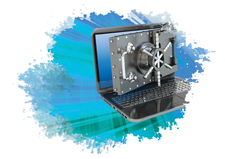Linux control over Secure Boot
Better Boots

The Shim bootloader lets Linux users regain some control over the Secure Boot process.
The UEFI Secure Boot feature ensures that only software with a valid digital signature launches on a computer. UEFI searches for a bootloader on the SSD or hard disk, verifies the digital signature from one of the certificates stored with UEFI, and, if the digital signature is valid, loads and activates the code.
The bootloader searches for the operating system, verifies the digital signature, and launches the operating system. Once the operating system is launched, it only loads kernel modules and drivers that have a valid digital signature.
The idea is that, if all components only load code from trustworthy sources, it is much more difficult for malware authors hiding away in the grubby corners of the Internet to smuggle their software into the boot process.
[...]
Buy this article as PDF
(incl. VAT)
